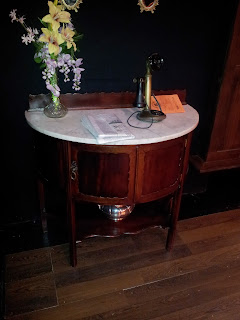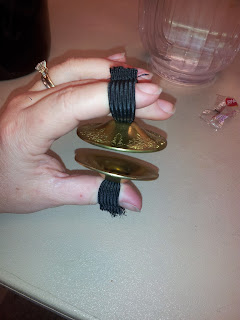An Inspector Calls at Remy Bumppo, turned out beautifully, with a huge beautiful oriental rug and beautifully finished wood furniture.
When we started work on the show, and the set designer sent me research with images of the type of furniture he was imagining, I was worried. I knew my budget was not enough to be able to purchase anything.
Then, when I discovered that none of my go-to rental sources had anything, I was even more worried.
I hoped that I would find someone on craigslist selling something beat-up that I could repair, or something they didn't know the value of. But after weeks of looking I had nothing.
While out running other errands in the city, I drove past an antique store that I hadn't been in for years. I had long ago ruled it out as being more expensive that I could afford on any of my budgets. I figured it couldn't hurt to stop in, and I was desperate.
Walking into the store I immediately knew I had to find a way to work with them. The furniture in the store was right out of the research images.
I approached the owner and told him the situation. I had $X to spend and knew that was far less than he should charge me for a rental of all the pieces I wanted. I could offer him comp tickets to see the show and an insert ad in the program (with a guesstimated value of $X, which would be seen by approximately X number of people). I would take responsibility for the safety of the items while they were in the theater's possession, and the show itself is fairly tame, no large fights, no one treating the furniture roughly etc.
I was also able to provide him with a copy of the company's insurance policy, to assure him that, should some unforeseen incident harm his pieces, we would be able to compensate him.
He agreed to the rental and we have a beautiful dining room set with a table, six chairs, two beautiful gold mirrors, an overhead light fixture, and buffet and a marble top server for exactly what I had in the budget.
As precautions to preserve the condition of the furniture, we made sure to tell the cast and the set construction crew that it was rented and valuable, so that they take extra care with it. I have also given the ASM some nice furniture polish and rags. Every evening after the performance she wipes off and polishes the top of the dining table, to make sure no drops of liquid from the show are left on it, and to keep it in beautiful condition.

















































